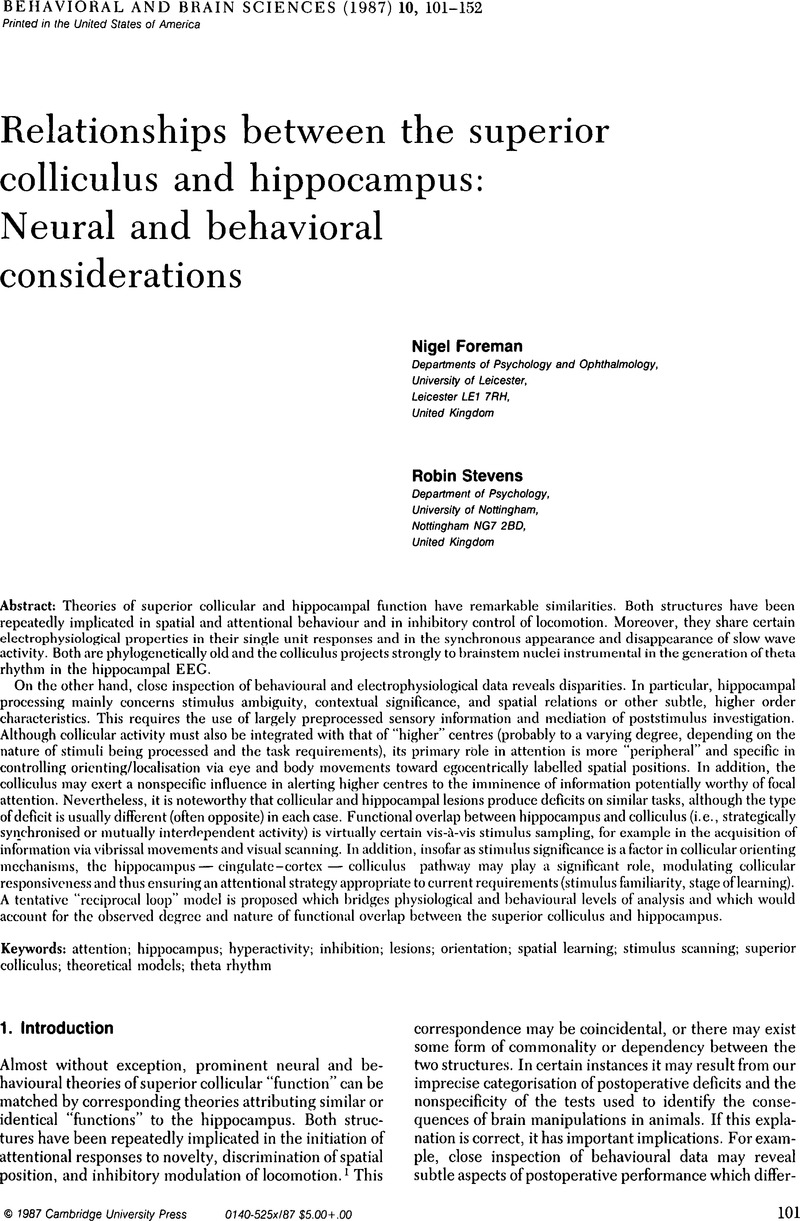Crossref Citations
This article has been cited by the following publications. This list is generated based on data provided by Crossref.
Foreman, Nigel
and
Stevens, Robin
1988.
Memory – we had not forgotten.
Behavioral and Brain Sciences,
Vol. 11,
Issue. 03,
p.
554.
Thinus-Blanc, Catherine
1988.
Exploration and memory.
Behavioral and Brain Sciences,
Vol. 11,
Issue. 03,
p.
552.



